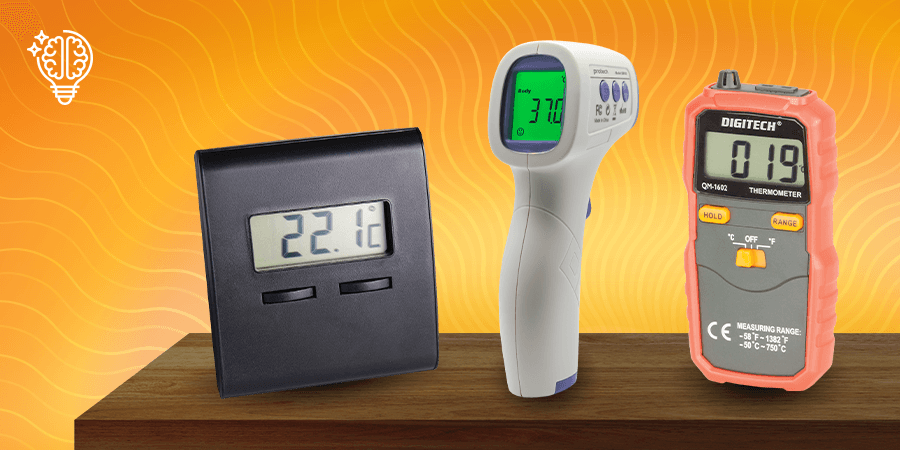
Using a liquid-filled glass tube to check temperature is positively a relic of the last millennium.
Today's digital thermometers provide measurements quickly and accurately. Most of them rely on one of three popular sensing technologies, which are best suited to specific applications such as very high temperatures or non-contact measurement.
Thermistor
The most common sensor is a thermistor, a component whose resistance varies by a precise amount relative to its temperature. When voltage is applied across the thermistor, the resistance is measured and translated by a microprocessor to a precise temperature reading, usually on an LCD screen.
Devices based on thermistors include simple desk thermometers, outdoors and weather stations and fridge and freezer thermometers.
Thermocouple
Often used as the probe for workshop thermometers and DMMs that support temperature measurement, a thermocouple can typically handle a higher maximum temperature than a thermistor - well over 700°C. The thermocouple relies on the premise that a potential difference (voltage) is generated in a circuit made from two wires of different metals, if the temperature at one junction is different to the other.
Translating a thermocouple's voltage into temperature is more complex than simply using a thermistor. This is because the processor needs to correct for the temperature of the junction at the non-sensing end of the circuit.
Infrared
Non-contact thermometers measure the infrared radiation given off by the object (or person!) being measured. For rangefinding, they can use dual lasers that intersect to form a single visible dot at a calibrated distance from the subject under measurement. They sense temperature by focusing infrared radiation onto a thermopile, a component that is actually composed of small thermocouples.
Check out our full range of thermometers here.

.jpg%3Fbranch%3Dprod&w=1920&q=75)